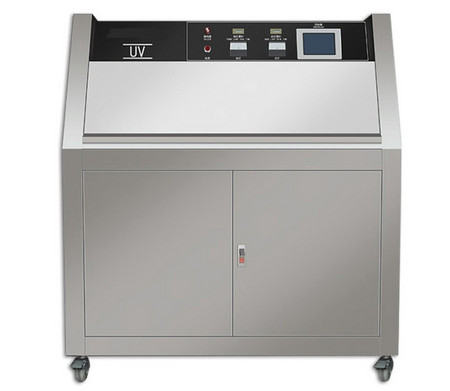
What types of materials are commonly tested using a UV aging test chamber?
2023/11/23
A UV aging test chamber is a specialized piece of equipment used to simulate the effects of long-term exposure to ultraviolet (UV) radiation on various materials. This testing is crucial in industries where materials are exposed to outdoor conditions, such as automotive, aerospace, plastics, coatings, and textiles. The purpose is to evaluate how well a material can withstand UV radiation, which is known for causing degradation, discoloration, and other undesirable. Here, we will explore the common types of materials that are regularly tested using a UV aging test chamber.

Polymers and Plastics:
Polymers and plastics are widely used in various industries, and their exposure to UV radiation can lead to degradation, embrittlement, and changes in mechanical properties. Testing these materials in a UV test chamber helps manufacturers understand the long-term durability of plastic components used in outdoor applications, such as automotive interiors, outdoor furniture, and building materials.
Coatings and Paints:
UV radiation can have a significant impact on the appearance and protective of coatings and paints. Testing these materials in a UV aging chamber allows manufacturers to assess how well a coating or paint can resist fading, chalking, cracking, and other forms of deterioration when exposed to sunlight over an extended period. This is crucial in industries like automotive, where the exterior coatings need to withstand harsh environmental conditions.
Textiles and Fabrics:
Textiles and fabrics used in outdoor applications, such as awnings, outdoor furniture upholstery, and clothing, are subjected to UV radiation. Testing these materials helps ensure that they maintain their colorfastness, tensile strength, and overall performance over time. UV aging tests provide valuable information for textile manufacturers to improve the longevity and quality of their products.
Rubber and Elastomers:
Rubber and elastomeric materials, commonly found in automotive components, seals, and gaskets, can degrade when exposed to UV radiation. Testing in a UV aging chamber helps assess the resistance of these materials to cracking, loss of elasticity, and other forms of deterioration, ensuring their reliability in outdoor and high UV exposure environments.
Adhesives and Sealants:
Adhesives and sealants play a crucial role in bonding and sealing various materials. UV exposure can affect their chemical composition and bonding strength. Testing these materials in a UV aging chamber allows manufacturers to evaluate the long-term performance of adhesives and sealants, ensuring they maintain their integrity and effectiveness over time.
Electronic Components:
Many electronic devices and components are exposed to sunlight during outdoor use. UV radiation can affect the performance and reliability of materials used in electronic components. UV aging tests help electronics manufacturers assess the durability of materials insulating polymers, coatings, and adhesives, ensuring the longevity and reliability of electronic devices.
Automotive Interiors:
Components used in automotive interiors, such as dashboards, seats, and trim, are exposed to sunlight through windows. UV aging tests are crucial for evaluating the resistance of these materials to fading, discoloration and other forms of degradation, ensuring the longevity and aesthetics of automotive interiors.
Photovoltaic (PV) Materials:
Materials used in solar panels and other photovoltaic applications are exposed to intense sunlight. UV aging tests are essential for evaluating the durability and efficiency of PV materials, helping to improve the performance and lifespan of solar energy systemsIn conclusion, a UV aging test chamber is a versatile tool for assessing the long-term durability of a wide range of materials exposed to UV radiation. Industries across the board use these tests to ensure that their products meet quality standards and can withstand the challenges of outdoor environments.
Previous: Fire Resistance Testing analysis: Insights into UL 263 and ASTM E119
N e x t : How much does a air permeability tester machine cost?



